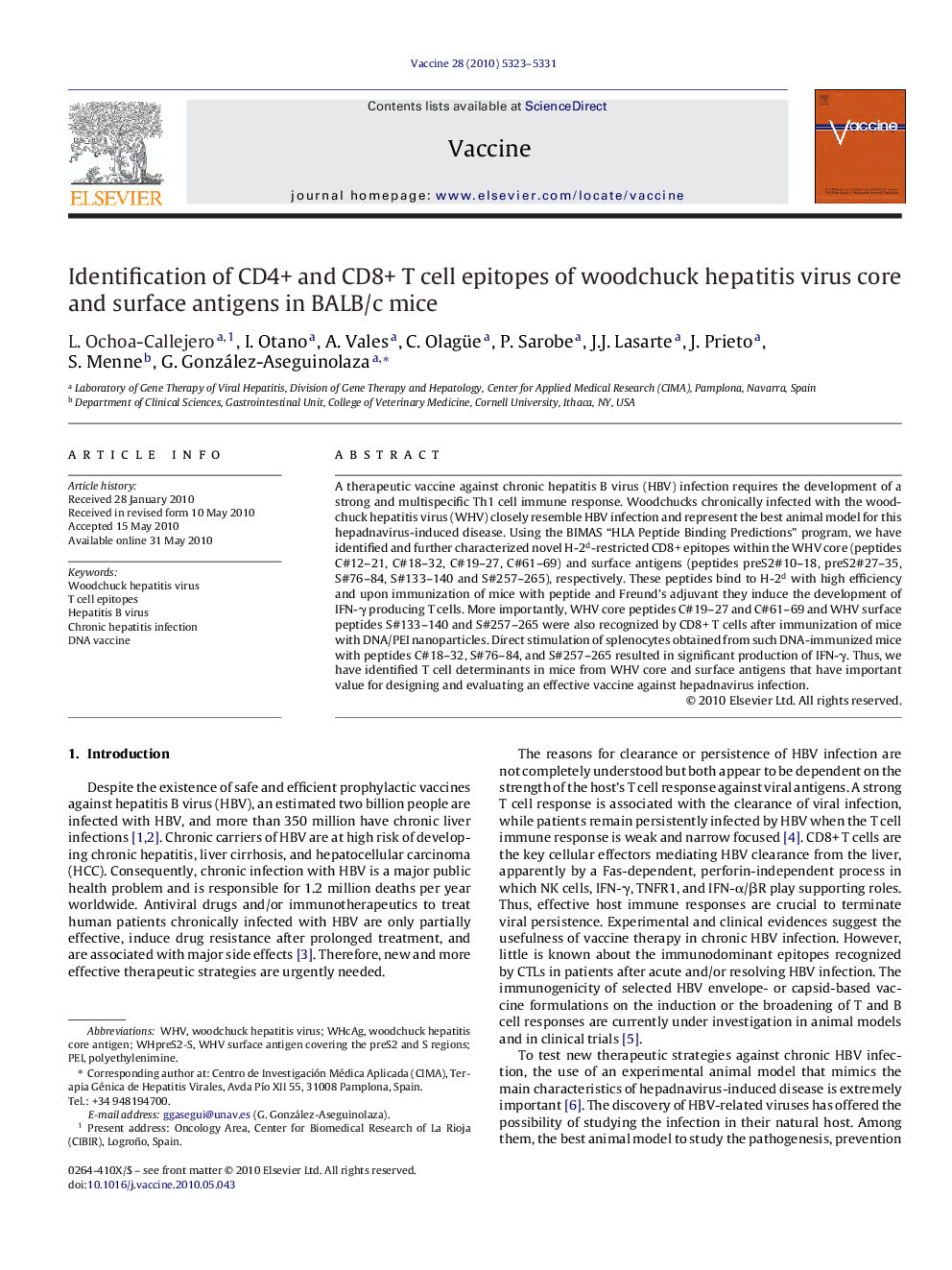| Article ID | Journal | Published Year | Pages | File Type |
|---|---|---|---|---|
| 10969991 | Vaccine | 2010 | 9 Pages |
Abstract
A therapeutic vaccine against chronic hepatitis B virus (HBV) infection requires the development of a strong and multispecific Th1 cell immune response. Woodchucks chronically infected with the woodchuck hepatitis virus (WHV) closely resemble HBV infection and represent the best animal model for this hepadnavirus-induced disease. Using the BIMAS “HLA Peptide Binding Predictions” program, we have identified and further characterized novel H-2d-restricted CD8+ epitopes within the WHV core (peptides C#12-21, C#18-32, C#19-27, C#61-69) and surface antigens (peptides preS2#10-18, preS2#27-35, S#76-84, S#133-140 and S#257-265), respectively. These peptides bind to H-2d with high efficiency and upon immunization of mice with peptide and Freund's adjuvant they induce the development of IFN-γ producing T cells. More importantly, WHV core peptides C#19-27 and C#61-69 and WHV surface peptides S#133-140 and S#257-265 were also recognized by CD8+ T cells after immunization of mice with DNA/PEI nanoparticles. Direct stimulation of splenocytes obtained from such DNA-immunized mice with peptides C#18-32, S#76-84, and S#257-265 resulted in significant production of IFN-γ. Thus, we have identified T cell determinants in mice from WHV core and surface antigens that have important value for designing and evaluating an effective vaccine against hepadnavirus infection.
Keywords
Related Topics
Life Sciences
Immunology and Microbiology
Immunology
Authors
L. Ochoa-Callejero, I. Otano, A. Vales, C. Olagüe, P. Sarobe, J.J. Lasarte, J. Prieto, S. Menne, G. González-Aseguinolaza,
